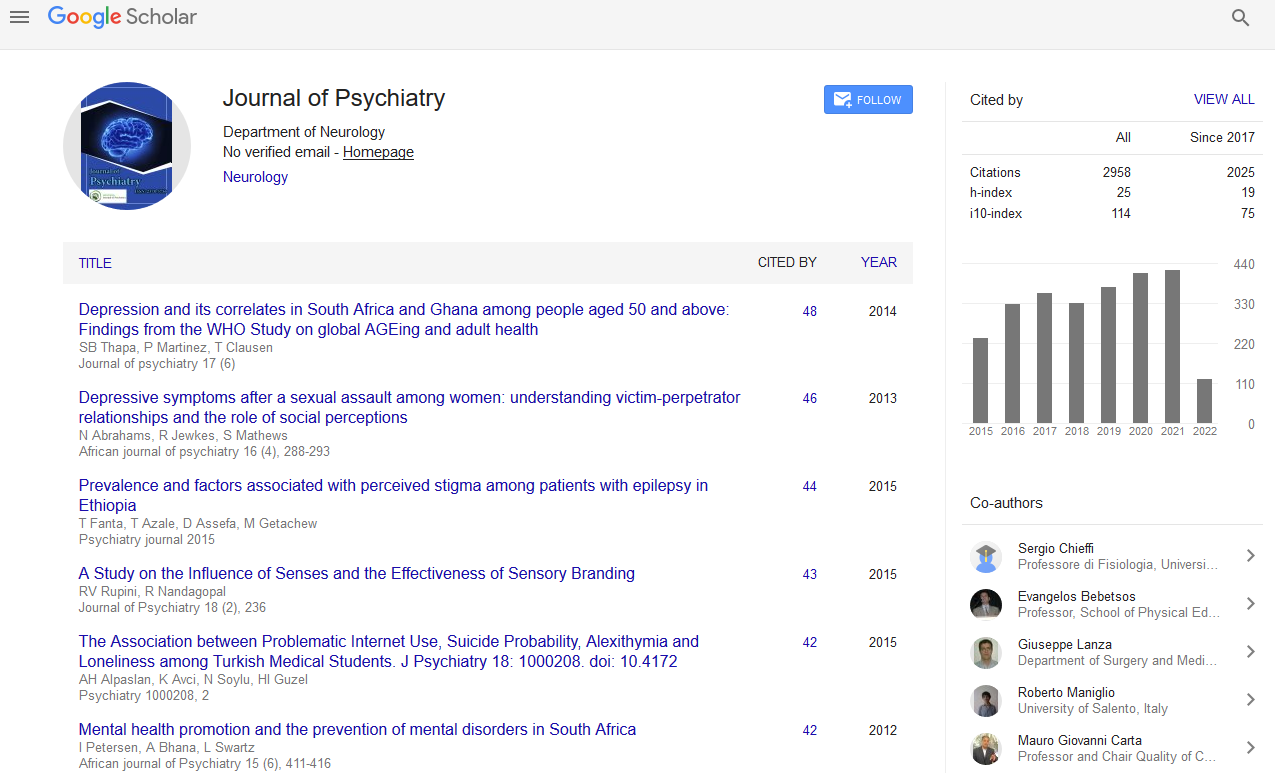PMC/PubMed Indexed Articles
Indexed In
- RefSeek
- Hamdard University
- EBSCO A-Z
- OCLC- WorldCat
- SWB online catalog
- Publons
- International committee of medical journals editors (ICMJE)
- Geneva Foundation for Medical Education and Research
Useful Links
Share This Page
Open Access Journals
- Agri and Aquaculture
- Biochemistry
- Bioinformatics & Systems Biology
- Business & Management
- Chemistry
- Clinical Sciences
- Engineering
- Food & Nutrition
- General Science
- Genetics & Molecular Biology
- Immunology & Microbiology
- Medical Sciences
- Neuroscience & Psychology
- Nursing & Health Care
- Pharmaceutical Sciences
Abstract
Does Disclosure of HIV/AIDS Status to Children with HIV/AIDS Affect their Mental Health?
Mary Oluwatosin Adefalu, Mosunmola Florence, Tunde-Ayinmode, Baba Awoye Issa and Adewole Adebola Adefalu
Objectives: The paper assessed the prevalence of disclosure, factors responsible for awareness and effect of disclosure on the mental health of HIV-infected children at the HIV clinic of the University of Ilorin Teaching Hospital, Nigeria (UITH). Methodology: It was a descriptive cross-sectional study involving 196 HIV-positive children between 6-17years at the HIV clinic of UITH. A two-staged study was carried out: a first stage in which a questionnaire designed by the researchers was administered followed by a screening instrument- the Child Behaviour Questionnaire (CBQ) to parents/caregivers and children; and a second stage interview using the K- SADS-PL. In the second stage, a score of seven or more and approximately 30% of those scoring less than seven were selected on the CBQ as this represents the best trade-off between a high sensitivity and low false positive rate. Result: About Eighteen percent (18%) of the children were aware of their HIV/AIDS status. Among the 19.4% of the study population with mental health problems, 11% were aware of their status. However, the children’s awareness of HIV status was not associated with mental health problems, Pearson X2 (1.93, N=196), p= 0.16. Children who were aware of their HIV status were more likely to be adolescents, were in secondary schools, were more likely to be from the Hausa tribe, had younger fathers and had mothers who were HIV positive, Pearson X2 (16.514, 31.836, 7.877, 15.393 and 10.149 respectively, N=196), p ≤ 0.01, <0.01, 0.01, <0.01 and 0.006 respectively. Conclusion: Despite the fact that disclosure of a child’s HIV status did not necessarily result in development of psychiatric disorders in the present study, awareness of HIV status is still relatively low among the age group. However, it delineates the role of socioeconomic and demographic factors in determining the level of awareness of children about their HIV status


